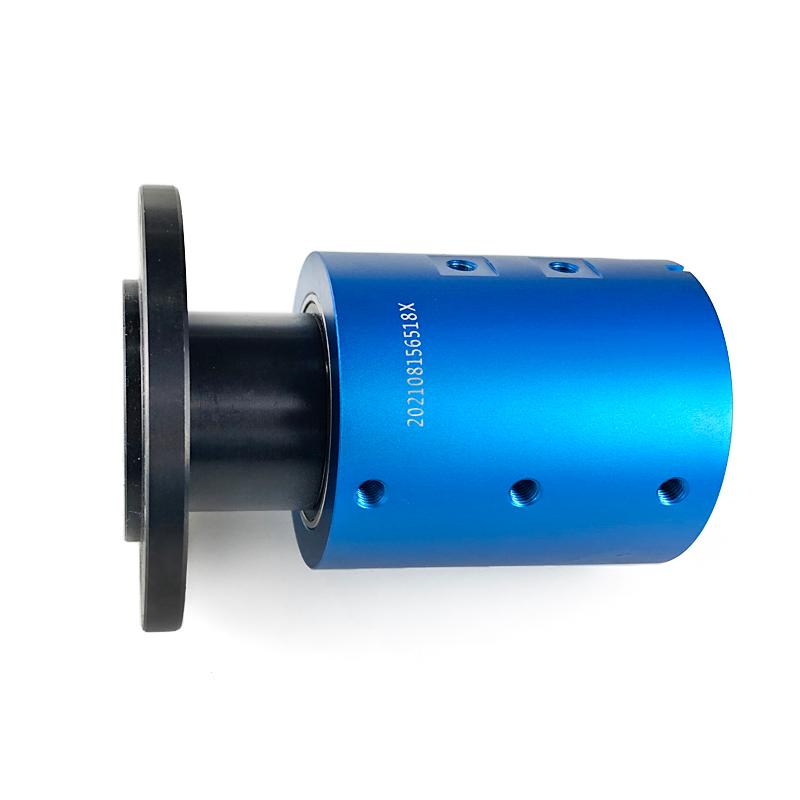This comprehensive article delves into the dynamic world of swivel electric mechanisms, shedding light on their revolutionary impact across various sectors. Beginning with an introduction to swivel electric, the piece traces its evolution and significance in today’s technology-driven landscape. With a deep dive into the mechanics behind swivel electric systems, readers are guided through the intricacies and innovation powering these devices. The discussion expands to explore the pivotal role of swivel electric technologies in transforming industries such as automotive, home appliances, healthcare, and more, providing vivid examples of their application and utility.
Looking ahead, the article forecasts the future developments in swivel electric technology, anticipating advancements that promise to further refine and expand its applications. For readers interested in investing in swivel electric products, a practical guide on selecting and maintaining these innovative solutions is presented, ensuring longevity and performance.
Introduction to Swivel Electric
In the vast landscape of innovation and technology, “Swivel Electric” emerges as a powerful concept that seamlessly integrates the sophistication of electrical engineering with the practicality of rotational motion. This introduction seeks to unfold the essence of swivel electric, tracing its lineage from the early days of electrical engineering to its pivotal role in the tapestry of modern technology.
The Genesis of Swivel Electric
The saga of swivel electric began in the corridors of industrial revolution, where the marriage of electricity and mechanical rotation promised to redefine efficiency and design. Initially conceptualized to enhance the functionality of early electrical devices, the principle of swivel electric rapidly found its way into numerous applications, revolutionizing the way we approached motion and machinery.
As we ventured into the 20th century, the evolution of swivel electric technology accelerated, thanks to the unprecedented advancements in electrical engineering and materials science. From the humble beginnings in rotating fans and turntables to the sophisticated applications in modern robotics and automotive technologies, swivel electric has been at the heart of innovation.
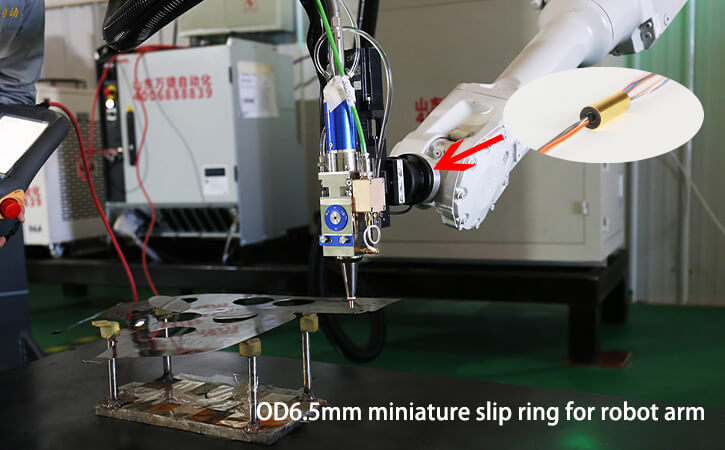
Swivel Electric in the Modern World
Today, swivel electric stands as a testament to human ingenuity, finding its relevance in myriad domains. In the everyday household, swivel electric mechanisms power a range of appliances, from rotating TV mounts to electric revolving cake stands, making convenience a tangible reality. In the realm of industrial applications, swivel electric technologies drive the functionality of robotic arms, automated manufacturing lines, and advanced vehicular systems, propelling efficiency to new heights.
The ubiquity of swivel electric in contemporary life underscores its significance. It is not merely about rotational motion or electrical power; it’s about enhancing life’s efficiency and exploring possibilities that seemed distant dreams a few decades ago.
Illuminating Real-World Applications
Consider, for instance, the transformative impact of swivel electric in the world of renewable energy. Wind turbines, a beacon of green energy, employ swivel electric mechanisms to rotate their blades and nacelles, optimizing wind capture. This application alone illustrates the pivotal role of swivel electric in harnessing alternative energy sources, contributing to a sustainable future.
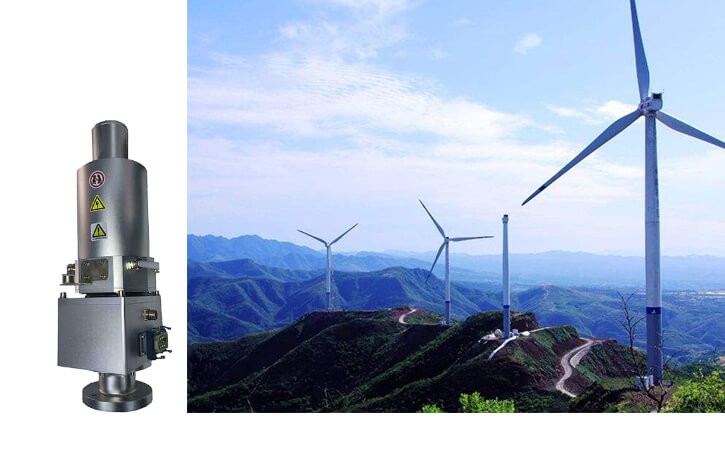
In the automotive sector, the advent of electric power steering (EPS) systems showcases the innovative application of swivel electric. By replacing traditional hydraulic steering mechanisms with electric systems, EPS offers enhanced control and efficiency, highlighting how swivel electric principles can redefine everyday experiences.
As we delve deeper into the 21st century, the relevance of swivel electric continues to grow, driven by the insatiable human quest for innovation and efficiency. From powering the devices that dot our homes to driving the wheels of industry, the legacy of swivel electric is omnipresent. This chapter has aimed to encapsulate the essence of swivel electric, setting the stage for a deeper exploration into its mechanics, applications, and future trajectories.
By understanding the historical context and current applications of swivel electric, we not only pay homage to a cornerstone of modern technology but also ignite the spark of curiosity to explore what the future holds for this fascinating phenomenon.
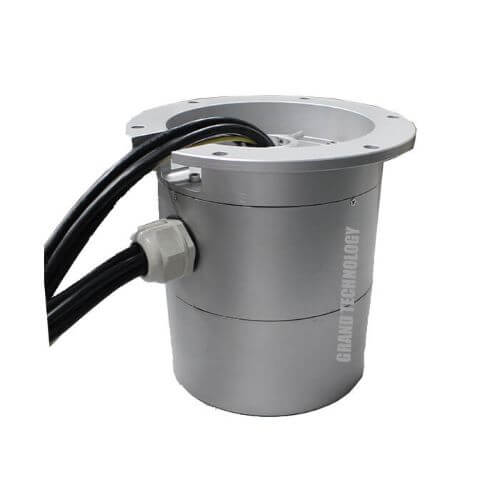
Understanding the Mechanics of Swivel Electric
At the core of swivel electric technology lies a seamless blend of electrical and mechanical principles. To truly appreciate the sophistication behind swivel electric, one must delve into the intricate dance between current, magnetism, and rotational force. This chapter aims to unravel these complexities in a structured and engaging way, using illustrative examples to bring clarity to the concepts.
The Fundamental Principles
Consider a rudimentary swivel electric device – it is fundamentally an electric motor that imparts rotational motion. To understand this, we must first look at the basic elements: the rotor (the component that rotates), and the stator (the stationary part that houses the rotor). When an electric current passes through the coils wound around the stator, a magnetic field is generated. This field interacts with magnets on the rotor, creating a force that causes the rotor to turn — this is the core mechanic at the heart of swivel electric technology.
The Technology Behind the Rotation
Diving deeper, the interplay between electric currents and magnetic fields follows the principles outlined by Faraday’s law of induction and Lorentz force. These physical laws explain how changes in the magnetic field can induce current and how the magnetic field interacts with this current to produce motion. A swivel electric mechanism typically includes components such as bearings, which reduce friction and wear, and sensors to regulate the rotation speed and position.
Real-World Examples and Case Studies
To contextualize these principles, let’s examine a case study in automotive design. Electric swivel seats in vehicles use this technology to assist mobility-impaired passengers. The swivel mechanism is controlled by an electric motor that precisely rotates the seat. The sophistication of control systems ensures a smooth and safe transition from one position to another, highlighting the practical utility of the swivel electric design in improving accessibility and comfort.
Another application is in robotics. Industrial robots often incorporate swivel electric joints, allowing for precise and controlled movement which is crucial for tasks like assembly, painting, or welding. These swivel electric components can make intricate movements that mimic human dexterity but with greater consistency and efficiency.
Addressing Common Questions
Now, it’s common for readers to wonder about the efficiency and durability of these systems. Is swivel electric technology reliable in the long term? Indeed, with the advancement in materials and design, these systems are more robust and long-lasting. Proper maintenance such as regular lubrication of bearings and timely replacement of worn-out parts ensures longevity.
Actionable Advice
For readers interested in integrating swivel electric mechanisms into their projects, start by understanding the torque and speed requirements of your application. Select a motor and complementary parts that match these requirements. Remember, the choice of a motor controller is equally crucial as it dictates the precision of the rotation and the overall effectiveness of the swivel electric system.
The mechanics of swivel electric are a testament to human innovation, marrying physical laws with practical applications. This chapter has illuminated the underpinnings of this silent workhorse of the modern world, allowing us to understand and appreciate its role in our daily lives. Through insightful case studies, we glean a sense of the real-world impact of swivel electric technology, from the seats of our cars to the robots on manufacturing floors, all while addressing concerns and offering direction for those keen to utilize this marvelous technology.
The Role of Swivel Electric in Different Industries
Swivel electric technology, with its innovative blend of electrical and mechanical engineering, has carved out an indispensable niche in multiple sectors of the global economy. From the automotive industry to household appliances and beyond, the applications of swivel electric mechanisms are both broad and transformative. This chapter takes a closer look at the pivotal role played by swivel electric in various industries, providing practical examples to illuminate its widespread utility and efficiency.
Transforming Mobility in the Automotive Industry
In the fast-evolving automotive sector, swivel electric technology enhances not only vehicle functionality but also safety and user experience. Consider the electric power steering systems that have replaced traditional hydraulic systems in many modern vehicles. These rely on swivel electric motors to provide more responsive steering control, significantly reducing the effort required from the driver and improving fuel efficiency due to lower energy consumption.
Another innovative application is in swivel seats designed for mobility-impaired passengers. These seats rotate and extend out of the vehicle, allowing easier access for individuals with limited mobility. The precise control and reliable operation of these swivel electric mechanisms underscore their importance in making transportation more accessible and inclusive.
Revolutionizing Home Appliances and Entertainment
The home appliance industry has also reaped the benefits of swivel electric technology, making everyday tasks simpler and more efficient. Take, for instance, the swivel electric bases used in modern TVs and monitors. These allow for smoother rotation, providing optimal viewing angles and enhancing the user’s experience without necessitating cumbersome manual adjustments.
In the kitchen, swivel electric technology powers appliances like stand mixers, enabling them to rotate consistently for thorough mixing or kneading, thus saving time and effort. The convenience and efficiency brought by these applications highlight the transformative impact of swivel electric in our domestic lives.
Elevating Efficiency in Industrial Machinery
Swivel electric mechanisms play a crucial role in automating and streamlining industrial processes. In manufacturing, robotic arms equipped with swivel electric joints perform tasks with precision and flexibility, from assembly lines to intricate welding jobs. These robots can swivel, pivot, and extend in various directions, allowing for complex movements that mimic human capability but with greater speed and consistency.
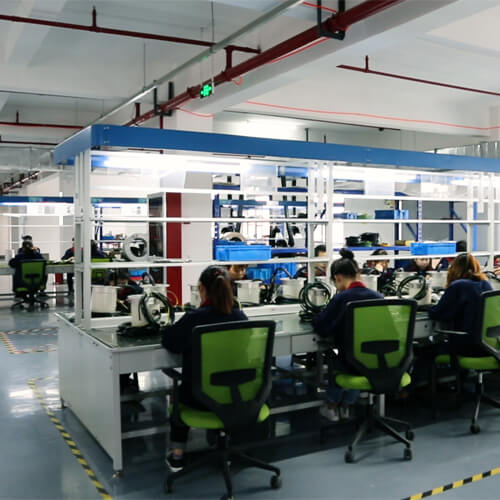
The construction industry benefits from swivel electric technology through equipment like cranes and excavators, which utilize swivel electric motors to enable rotation for digging, lifting, and moving heavy materials. This not only enhances efficiency but also safety on construction sites by providing precise control over heavy Machinery.
Addressing Common Questions and Misconceptions
A common misconception about swivel electric mechanisms is that they are prone to frequent failures due to their moving parts and electrical components. However, advancements in materials and engineering have significantly improved their durability and reliability. Regular maintenance and proper usage further extend their lifespan and maximize their performance.
Actionable Advice for Industry Stakeholders
For businesses considering integrating swivel electric systems into their operations, it’s essential to thoroughly assess your requirements. Identifying the specific tasks, load capacities, and movement range needed will guide you in selecting the right swivel electric solution. Collaborating with reputable manufacturers who offer customized solutions and after-sales support is also crucial for ensuring success and long-term reliability.
Swivel electric technology represents a synergy of engineering innovation and practical utility, driving advancements across various industries. From enhancing mobility and accessibility in automotive applications to revolutionizing home appliances and industrial machinery, its impact is both profound and far-reaching. As we uncover the multifaceted roles of swivel electric, it becomes evident that its contributions are integral to the ongoing quest for efficiency, convenience, and sustainability in the modern world.
User Experience with Swivel Electric Products
The true measure of any technology’s success can often be gauged by the user experience it delivers. Swivel electric products, with their rotating capabilities, offer a unique interaction that often leads to enthusiasm and a sense of novelty among consumers. This chapter sifts through the maze of consumer feedback, reviews, and anecdotes to provide a comprehensive picture of what it’s like to use swivel electric products in different spheres of life.
Home and Entertainment Systems
Consumer Satisfaction in Motion
Flat-screen TVs with swivel electric mounts have received rave reviews for their convenience. Users express delight in being able to rotate their screens effortlessly to face any direction—an indispensable feature for those with open-plan living spaces where viewing angles can often be a challenge.
User Testimonials
Coffee enthusiasts often mention how swivel electric platforms have revolutionized their mornings. The ones used for coffee machines allow the user to swivel the device around easily to refill water or add coffee beans without having to move it entirely, preserving the user’s counter space integrity and convenience.
Automotive Enhancements
Customer Reviews on Accessibility Features
In vehicles, the feedback for swivel electric seats has been overwhelmingly positive, especially from the elderly and those with reduced mobility. Testimonials often emphasize how the seats have restored users’ independence, allowing them to drive without needing assistance to enter or exit the vehicle.
Reliability and Usability
Similarly, electric power steering systems have received praise for making driving more accessible and less fatiguing. Users report a smoother ride and better control, particularly in challenging driving conditions such as parking in tight spaces.
Kitchen Appliance Interactions
Consumer Experiences with Convenience
In the kitchen, swivel electric stands for mixers are often lauded for their functional design. Home bakers appreciate the ability to access their bowl from all angles, finding it greatly aids in the addition of ingredients and the removal of the bowl once the mixing is done.
Addressing Questions and Specific Needs
Some users had initial concerns over the stability of electric rotating stands, particularly when dealing with heavy dough. Manufacturers have addressed these concerns by ensuring that these stands are built with a low center of gravity and non-slip bases to maintain stability during operation.
Addressing Common Questions and Misconceptions
When discussing user experiences, a few common queries arise. One is the concern over maintenance: how frequently must these products be serviced? The answer varies by product and usage intensity, but generally, swivel electric products are designed with longevity in mind, requiring minimal maintenance, such as occasional lubrication of moving parts.
Another question concerns energy consumption. Consumers interested in sustainability are often pleasantly surprised to learn that these mechanisms are highly efficient, consuming negligible amounts of electricity—a fact that’s usually highlighted by environmentally-conscious manufacturers in their product descriptions.
Actionable Advice for Prospective Buyers
For those looking to purchase swivel electric products, consumers recommend reading reviews and checking ratings to ensure that the product meets their specific needs. It’s also advisable to consider the warranty and after-sales service, as these factors can significantly impact user satisfaction in the long term.
The testimonials and reviews of swivel electric products paint a vivid picture of satisfied consumers. From the enhanced mobility in automotive functions to the rotational ease in home entertainment and kitchen appliances, the experiences reported by users underscore the value that these innovative products add to their daily lives. As such, swivel electric technology not only represents a feat of engineering but also signifies a commitment to improving user experiences across a wide array of applications.

The Advantages of Using Swivel Electric
Swivel electric represents a paradigm shift in the way rotation mechanisms function in various devices and equipment. Its superiority over traditional mechanical rotation systems is evident in numerous applications, from improved precision to enhanced efficiency. This chapter unpacks the myriad advantages of swivel electric, shedding light on why it is becoming a favorable choice across industries.
Outstanding Precision and Control
Precision in Operation
Swivel electric systems offer unparalleled precision, a critical advantage in applications where exact movements are paramount. For example, in the medical field, swivel electric technology is employed in imaging equipment such as CT scanners, allowing for extremely accurate positioning, which translates into better diagnostic images.
Case Studies: Surgical Robotics
Diving deeper, surgical robots equipped with swivel electric actuators have been game-changers. Surgeons can control robotic arms with an accuracy that far surpasses human capability, reducing the risk of error and improving patient outcomes.
Durability and Low Maintenance
High Durability Standards
Unlike traditional mechanical systems which comprise numerous parts that are prone to wear and tear, swivel electric systems are generally more durable due to their simplified designs. The use of robust materials and fewer moving components contributes to a longer life span.
Minimal Maintenance Required
In the context of industrial applications, such as in automated manufacturing arms, the fact that swivel electric mechanisms require less frequent maintenance can significantly reduce downtime and operational costs.
Enhanced Energy Efficiency
Energy Savings Illustrated
Swivel electric systems stand out for their energy efficiency. For instance, in electric power steering in automobiles, these systems draw power only when the wheel is turned, in contrast to hydraulic systems which run continuously and sap more energy.
Green Technology Choice
The move towards greener technologies has been cemented by swivel electric mechanisms due to their efficient use of power. This efficiency is particularly well-received in industries where sustainability initiatives are deeply integrated into business models.
Ergonomic Benefits and User Comfort
Improved User Experience
The ergonomic design and ease of use of swivel electric products provide significant comfort advantages. Take, for instance, rotating chairs with swivel electric bases — they allow users to turn effortlessly without strain, enhancing user comfort, especially for those who need to move around frequently.
Leveraging Ergonomics for Safety
Incorporating this rotation convenience, ergonomic workstations that feature swivel electric components can reduce the risk of repetitive strain injuries in the workplace, another key benefit.
Quiet Operation and Noise Reduction
The Silent Functionality
Another often overlooked but appreciated advantage of swivel electric mechanisms is their quiet operation when compared to their mechanical counterparts. In environments like libraries, where automated bookshelves may employ swivel electric motors, the silence ensures minimal disturbance to the ambiance.
Addressing Common Questions and Misconceptions
A prevailing misconception about electric-based systems is their supposed vulnerability to power outages and electrical failures. However, most swivel electric systems include manual override features or backup power solutions to ensure continued operation, addressing this concern head-on.
Actionable Advice for Decision Makers
For decision-makers considering the adoption of swivel electric technology, the recommendation is to conduct a thorough cost-benefit analysis. While initial investment costs might be higher compared to traditional systems, the long-term savings on maintenance, energy, and enhanced productivity often present a compelling case.
The transition to swivel electric systems is more than a trend; it’s a response to the growing demand for higher precision, efficiency, and user-friendly solutions. The diverse advantages it offers make a strong case for its adoption, pinpointing the technology as a driving force behind innovation in motion control. Its role in accelerating progress across various sectors is a testament to how swivel electric technology not only meets current needs but anticipates future demands.
Challenges and Concerns Surrounding Swivel Electric
While swivel electric technologies offer numerous advantages, like any innovative solution, they come with their own set of challenges and concerns. Acknowledging these hurdles is crucial for both consumers and manufacturers to ensure safety, reliability, and user satisfaction. This chapter delves into the potential limitations, safety concerns, and how the industry is addressing these critical issues.
Integration with Existing Systems
Overcoming Compatibility Hurdles
One of the significant challenges facing swivel electric technology is its integration into existing systems. For instance, in the automotive industry, retrofitting older models with swivel electric steering systems can be complex due to space constraints and the existing vehicle design.
Manufacturers’ Approach to Compatibility
Companies are tackling this issue by offering adaptable designs and providing comprehensive guidelines and kits for integration, ensuring that swivel electric technology can be more universally applied.
Cost Implications
Analyzing the Investment
The upfront cost of swivel electric systems, especially for high-end applications, is often higher than that of traditional systems. This can be a barrier to adoption for small businesses and individuals.
Justifying the Expense
To address cost concerns, manufacturers emphasize the long-term savings in maintenance and energy consumption. Additionally, many companies are investing in cost-reduction strategies through advanced manufacturing techniques and economies of scale.
Safety and Reliability Concerns
Ensuring User Safety
Safety is a paramount concern, especially in swivel electric products used in high-stakes environments such as medical facilities and automotive industries. Instances like system failures, unexpected movements, or malfunctions can pose significant risks.
Enhancing Reliability
Companies are rigorously testing swivel electric systems to meet strict safety standards. Advanced diagnostics and built-in fail-safes are becoming standard features, designed to detect problems early and mitigate risks immediately.
Technological Complexities
Understanding the Learning Curve
The sophisticated technology behind swivel electric systems can also introduce a learning curve for users and technicians. Training and familiarity with the system are essential to maximize its benefits and ensure safe operation.
Addressing the Complexity
Manufacturers are responding by offering extensive training programs, user manuals, and customer service support to assist in the adoption process. They are also focusing on designing more intuitive user interfaces to minimize the complexity of operating such systems.
Environmental Impact
Considering Sustainability
The environmental footprint of producing and disposing of swivel electric systems, particularly the electronics and batteries involved, is a concern for environmentally conscious consumers and organizations.
Pursuing Eco-friendly Solutions
To combat this, companies are exploring greener manufacturing processes, recycling programs, and using sustainable materials. Research into longer-lasting batteries and more efficient systems is ongoing to reduce the environmental impact.
Addressing Common Questions and Misconceptions
A frequent question is about the electromagnetic fields (EMF) produced by electric systems and their potential health impacts. Studies and industry regulations are in place to ensure that swivel electric products comply with safe EMF levels, dispelling concerns over health risks.
Actionable Advice for Consumers
For those considering swivel electric solutions, it’s advisable to research and choose products from reputable companies known for quality and safety standards. Engaging with user communities and seeking out reviews and testimonials can also provide insight into the reliability and performance of these systems.
Navigating the challenges and concerns surrounding swivel electric technology is a shared responsibility between manufacturers and consumers. By fostering communication, prioritizing safety and sustainability, and embracing continuous improvement, the path forward looks promising. While hurdles exist, the collective effort to overcome them is a testament to the innovative spirit driving the advancement of swivel electric technology.
The Future of Swivel Electric
The realm of swivel electric innovation stands on the precipice of monumental change, drawing excitement and speculation from technology enthusiasts, industry experts, and consumers alike. As we delve into the future of swivel electric, we explore the technological advancements on the horizon, offer predictions on how these systems may evolve, and consider their broader implications.
Technological Advancements
Integration of AI and Machine Learning
Predictive Maintenance and Autonomous Adjustments
The integration of Artificial Intelligence (AI) and Machine Learning (ML) into swivel electric systems promises transformative improvements. Future systems could predict maintenance needs and autonomously adjust to optimize performance and extend product lifespan, heralding a new era of “smart” swivel technology.
Case Study: Autonomous Vehicles
Consider the application in autonomous vehicles: swivel electric technology equipped with AI could dynamically adjust steering mechanisms for improved handling and safety based on real-time road conditions and driving patterns.
Material Innovation
Stronger, Lighter Materials
Advancements in materials science are expected to lead to the development of stronger, lighter, and more durable materials for swivel electric mechanisms. This could significantly enhance efficiency and sustainability by reducing energy consumption and extending the product’s life.
Example: Graphene-Based Components
Graphene, with its exceptional strength and electrical conductivity, holds potential for creating highly efficient, durable, and lightweight swivel systems, revolutionizing product design across various sectors.
Predictions for Evolution
Enhanced User Interface and Experience
Touch-free Controls
Future swivel electric systems might feature advanced user interfaces, such as gesture recognition or voice control, offering a seamless, touch-free operation. This would not only improve accessibility but also cater to the increasing demand for hygiene and convenience in both public and private spaces.
Expansion into New Markets
Beyond Automotive and Industrial
While currently prominent in automotive and industrial applications, swivel electric technology’s versatility and efficiency could see it expand into new markets. For example, home furniture with swivel electric functionality could offer improved mobility for the elderly or disabled, redefining inclusivity in design.
Addressing Misconceptions
Concerns About Electromagnetic Fields (EMF)
Safety Standards Compliance
A common misconception involves concerns about the EMF generated by electric systems. Future advancements will continue to prioritize safety, adhering to international EMF exposure standards, ensuring that swivel electric products are safe for everyday use.
Cost Misconceptions
Long-term Savings
The perceived high upfront cost of swivel electric products often overlooks the long-term savings in maintenance and energy efficiency. Future marketing efforts will likely aim to better communicate the economic benefits and return on investment to consumers.
Actionable Advice
Stay Informed
Embrace Continuous Learning
As swivel electric technology evolves, staying informed about the latest developments will empower consumers and businesses to make educated decisions, ensuring that investments are future-proof and aligned with emerging trends.
Engage with Innovators
Participation in Beta Testing
Consumers and industry professionals alike can benefit from engaging with manufacturers and innovators through beta testing or feedback programs. This offers a firsthand experience of upcoming technologies and an opportunity to influence product development.
The future of swivel electric is ripe with potential, promising not only technological marvels but also a shift in how we interact with and benefit from electric mobility and automation. As we witness these advancements unfold, the horizon expands, inviting us to reimagine the possibilities that lie in integrating sophistication, sustainability, and safety into our everyday lives. By embracing change, fostering innovation, and dispelling misconceptions, we pave the way for a future where swivel electric technology enhances both our capabilities and our world.
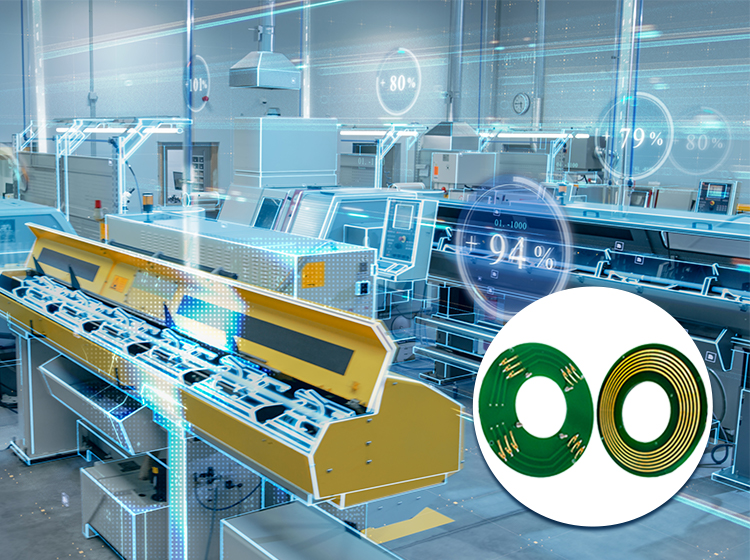
Steps for Buying and Maintaining Swivel Electric Products
Navigating the labyrinth of swivel electric products can be overwhelming. Numerous factors need to be considered, right from the product’s intended usage, reliability, safety standards, cost-effectiveness, to its eco-friendliness. This chapter seeks to guide consumers through the process of purchasing the right swivel electric product according to their needs and offers tips to ensure its longevity.
Determining the Need
Identify the Requirement
The first step in purchasing any electric swivel product should be to clearly identify the need for the product. For instance, if the product is for a medical application, high precision and reliability would be significant factors.
Researching Available Options
Exploring the Market
Once the need is identified, look up available options. This research should include understanding specifications, capabilities, and features of various products, as well as their compatibility with existing systems, if applicable.
Product Reviews and Testimonials
Gather insights from consumer reviews and testimonials, industry experts, and peers who have used similar products. This can provide a wealth of practical information often not covered in product descriptions.
Consider the Provider’s Reputation
Quality of Service
Look for suppliers or manufacturers with a strong reputation for quality and customer service. Often, post-purchase services like maintenance support, warranties, and reliable customer service significantly impact the user’s overall experience.
Assessing Cost-effectiveness
Long-term Investment
While the initial investment might be higher for swivel electric products, they tend to be more cost-effective in the long run by saving on maintenance and energy costs. Therefore, a comprehensive cost analysis considering both upfront and operational costs can be more insightful.
Prioritize Safety and Sustainability
Safety Standards and Certifications
Ensure the product complies with relevant safety standards and holds necessary certifications. These ensure the product has been rigorously tested and complies with industry safety norms.
Eco-friendly Options
Also, consider the sustainability efforts of the manufacturer. Greener manufacturing processes, use of renewable materials, and efficient power usage are factors worth considering.
Understanding Maintenance Needs
Regular Clean-up and Inspection
Maintaining the longevity of swivel electric products is crucial. Basic maintenance like keeping the product clean, proper handling, and regular inspections can go a long way in extending its lifespan.
Scheduled Professional Maintenance
Some complex systems may require professional maintenance periodically. Clear guidelines regarding this should be given by the manufacturer.
Adhering to Usage Guidelines
Proper Usage
To ensure the product lasts longer, adhere to the usage guidelines specified by the manufacturer. Misuse, overloading, or mishandling can significantly reduce the life of the product.
Timely Repairs
If the product develops issues, don’t delay repairs. Prolonging can worsen the damage and lead to premature failure.
The process of buying and maintaining swivel electric products is much more than a simple transaction. It demands an understanding of your needs, diligent research, and mindful maintenance. By following these tips, consumers can make purchases that not only fulfill their needs but also offer longevity and reliability in the long run.
Why Swivel Electric Matter
In the labyrinth of technological evolution, swivel electric mechanisms have emerged as a silent yet impactful revolution, integrating seamlessly into various aspects of modern life. From the automotive industry’s steering mechanisms to the dynamic movement in robotic arms, and from the effortless swivel of office chairs to the precise rotation in medical Equipment, swivel electric technologies are omnipresent. This concluding chapter aims to reinforce the importance and relevance of swivel electric mechanisms, summarizing the key discussions and underscoring their pivotal role in shaping the future.
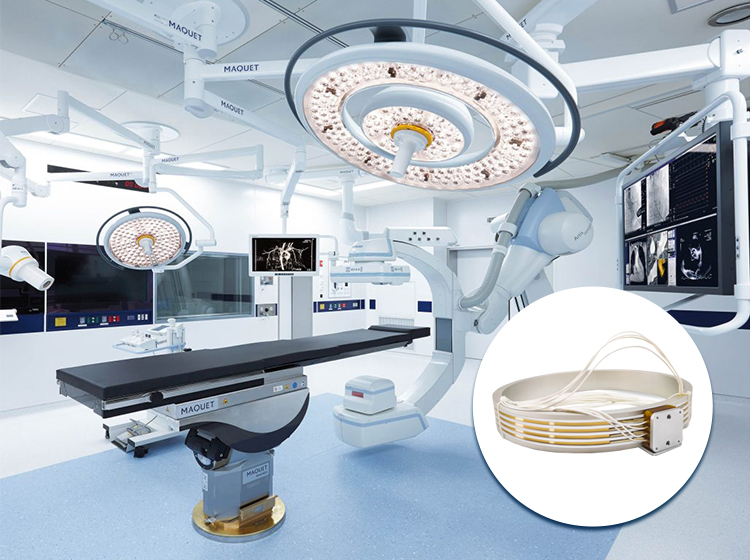
Summarizing the Swivel Electric Landscape
The Core of Modern Engineering
Swivel electric technology, with its ability to provide controlled, precise rotational movements, has become a cornerstone of modern engineering solutions. Its integration into everyday applications — from consumer electronics to industrial machines — exemplifies its versatility and indispensability.
The Drive Toward Sustainability and Efficiency
As discussed, the future of swivel electric is closely entangled with the pursuit of sustainability and enhanced efficiency. Through innovations such as AI integration and the adoption of cutting-edge materials, these systems are set to become even more energy-efficient, durable, and environmentally friendly.
Expanding Horizons
The exploration of swivel electric’s potential applications illustrates a future where its presence spans across various industries, offering solutions that are not only technologically advanced but also inclusive and universally accessible. The unfolding of smart, intuitive interfaces in swivel electric mechanisms promises a future where accessibility and convenience are paramount.
Addressing Key Misconceptions
Despite the significant advancements and evident benefits, misconceptions around the safety, cost, and complexity of swivel electric technologies persist. Breaking down these barriers by highlighting the robust safety standards, long-term cost benefits, and the user-friendly design of modern swivel electric mechanisms is crucial for wider acceptance and application.
Real-World Impact and Insights
Drawing from the real-world examples detailed throughout, from the automotive sector’s reliance on swivel electric mechanisms for safety and maneuverability to the medical field’s adoption for precision in devices, the tangible benefits of these technologies are unmistakable. These case studies not only illustrate the versatility and necessity of swivel electric systems but also how they contribute to advancements in safety, efficiency, and innovation.
The Way Forward
In embracing the future of swivel electric, it becomes evident that continued innovation, consumer education, and sustainability practices are non-negotiable. As technology evolves, so too must our strategies for integrating these systems into our daily lives, ensuring they contribute positively to society and the environment.
Engaging in the Swivel Electric Revolution
For consumers, professionals, and enthusiasts alike, staying informed about the latest developments, engaging with manufacturers through feedback and beta programs, and advocating for sustainability and inclusivity in design and application will be key to harnessing the full potential of swivel electric technologies.
The essence of swivel electric mechanisms lies not just in their technical capabilities but in their ability to redefine boundaries, enhance lives, and pave the way for a future where innovation and practicality converge. As we close this exploration into the world of swivel electric, it is clear that their impact extends far beyond mere convenience — embedding itself into the fabric of tomorrow’s technological landscape, promising a future that is both exciting and sustainable.
See What We Can Do

